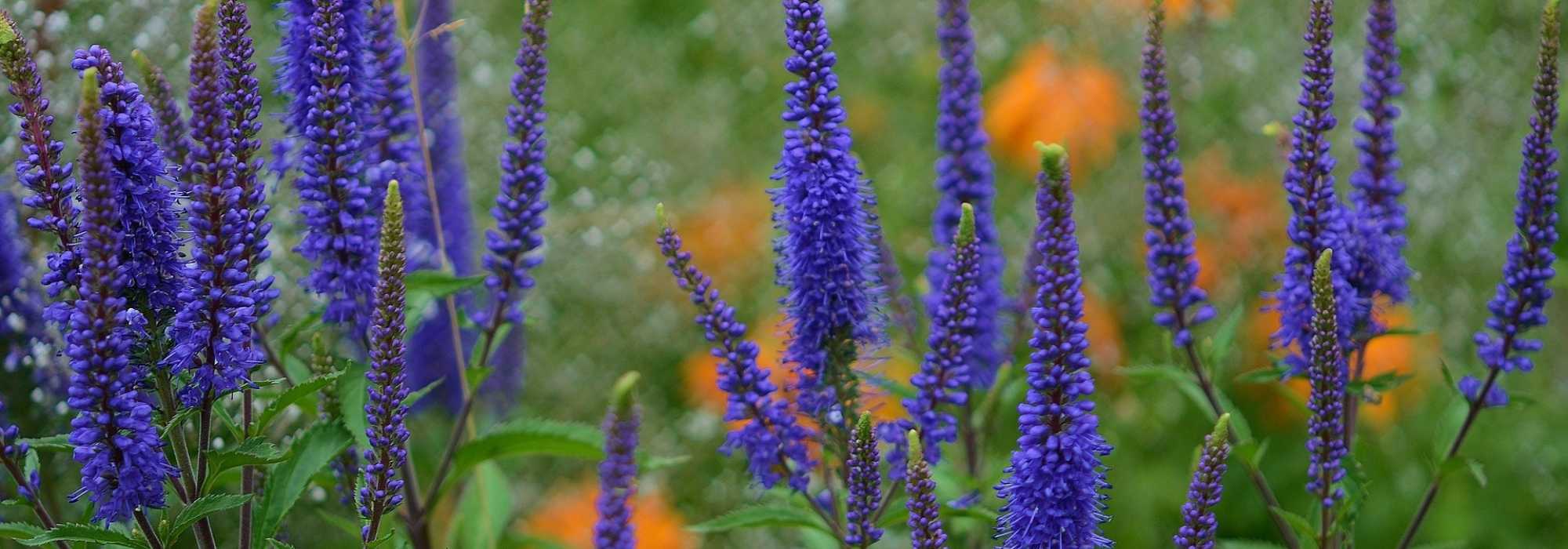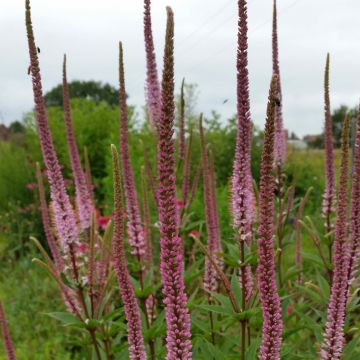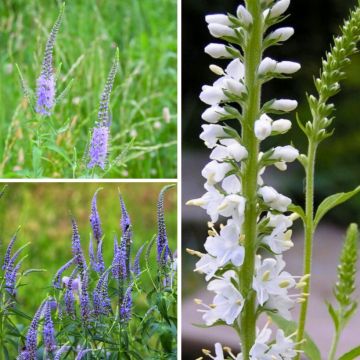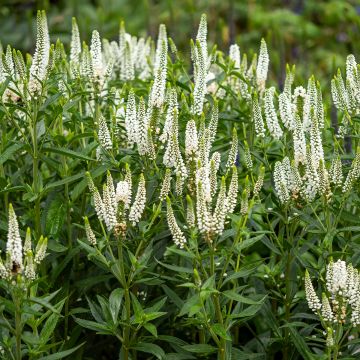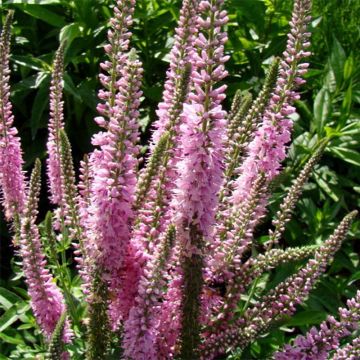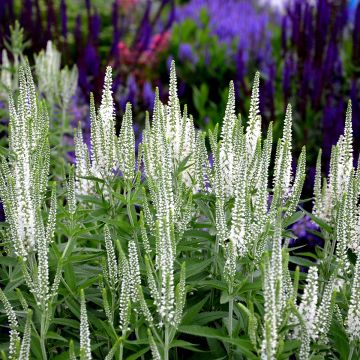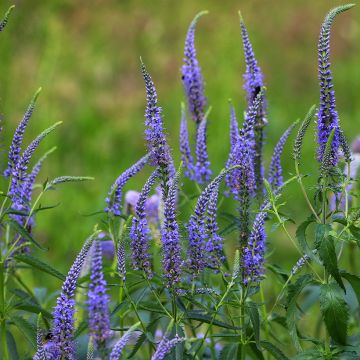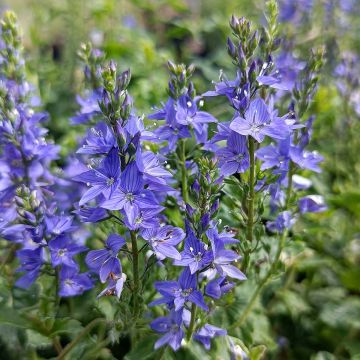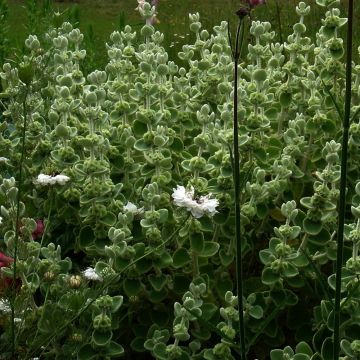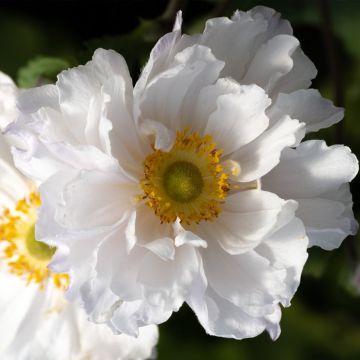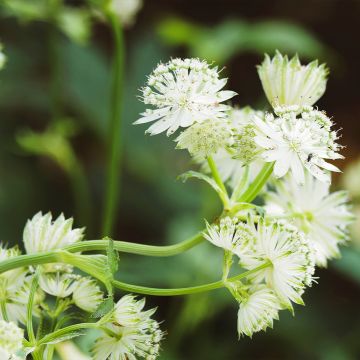

Veronicastrum sibiricum - Véronique de Sibérie
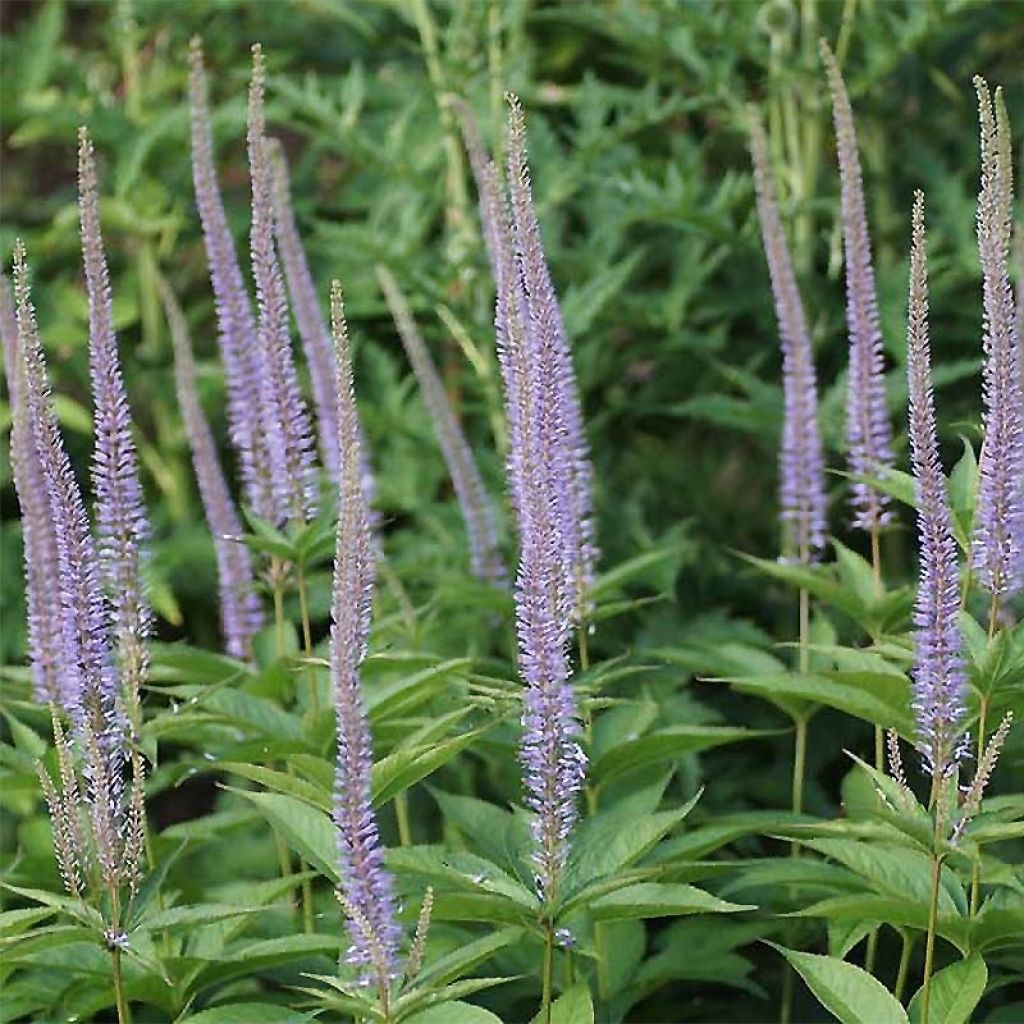

Veronicastrum sibiricum - Véronique de Sibérie
Veronicastrum sibiricum
Veronicastrum sibiricum
Culver's root, Virginia Speedwell, Bowman's Root
Graceful and slender plant. Hasn't grown much this year, each shoot has produced 3 flowers.
Francesca, 09/08/2022
Special offer!
Receive a €20 voucher for any order over €90 (excluding delivery costs, credit notes, and plastic-free options)!
1- Add your favorite plants to your cart.
2- Once you have reached €90, confirm your order (you can even choose the delivery date!).
3- As soon as your order is shipped, you will receive an email containing your voucher code, valid for 3 months (90 days).
Your voucher is unique and can only be used once, for any order with a minimum value of €20, excluding delivery costs.
Can be combined with other current offers, non-divisible and non-refundable.
Home or relay delivery (depending on size and destination)
Schedule delivery date,
and select date in basket
This plant carries a 12 months recovery warranty
More information
We guarantee the quality of our plants for a full growing cycle, and will replace at our expense any plant that fails to recover under normal climatic and planting conditions.

Would this plant suit my garden?
Set up your Plantfit profile →
Description
Veronicastrum sibiricum, or Siberian Speedwell, is a tall, spectacular perennial with proud upright mauve flower spikes during the summer. The remarkable foliage is arranged in whorls around the stems. The plant eventually forms a dense clump, which will bring lightness and height to partial shade borders, in moist to wet soil.
The Siberian Speedwell is a plant in the Plantaginaceae family (it was previously classified among the Scrophulariaceae). It also grows in China, Mongolia, Korea, and Japan, where it can be found in ditches along roads, on grassy slopes, or woodland edges. This impressive plant produces tall upright stems, adorned with lanceolate medium green leaves, arranged in successive rings, or whorls, around the stems. Between July and September, each stem produces a mauve-pink "candle" (occasionally white in its natural habitat) at its tip, an elongated, 20 cm (8in) spike of many small nectar-rich flowers with prominent stamens, giving it a very distinctive airy appearance. Overall, the species closely resembles Veronicastrum virginicum, its American cousin, but can be distinguished by slightly wider leaves and a little branched or unbranched inflorescence which accentuates its airy character. In autumn, the foliage turns a beautiful yellow before drying out. In good conditions, the plant will reach between 1.20 and 1.50 metres (4 and 5 feet) high, eventually forming a clump with a diameter of 50 to 80 cm (20 to 32in) after a few years.
Very hardy Veronicastrum sibiricum can withstand temperatures as low as -20°C. It prefers well-drained, rich, and moist, even wet soil. If the soil is too dry in summer, the plant fades and flowering can be compromised. The steep bank of a pond or a sunny border are excellent places to plant speedwell, which still needs several hours of (non-scorching) sun per day. The clump slowly expands through its non-invasive small rhizomes, so give it some space.
Pair it with other lush waterside perennials, such as Ligularia stenocephala, another tall plant, or its low-growing cousin Ligularia dentata 'Desdemona', as well as marsh spurge for a contrast of foliage and colour. You can also play contrast using tall fountain grasses like Molinia arundinacea 'Windsaule'.
Veronicastrum sibiricum in pictures
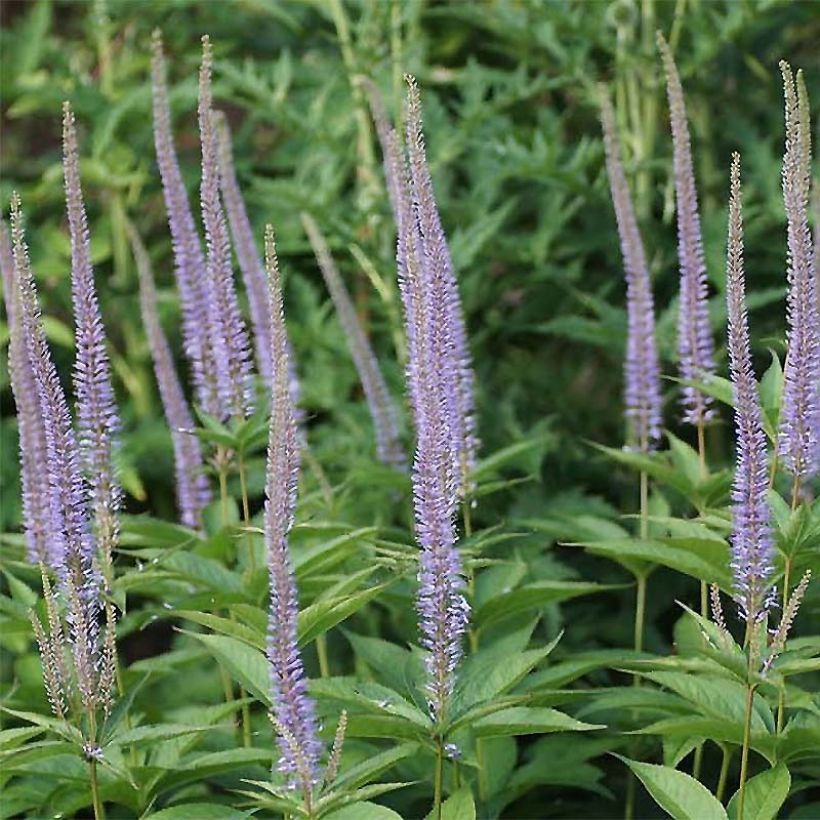

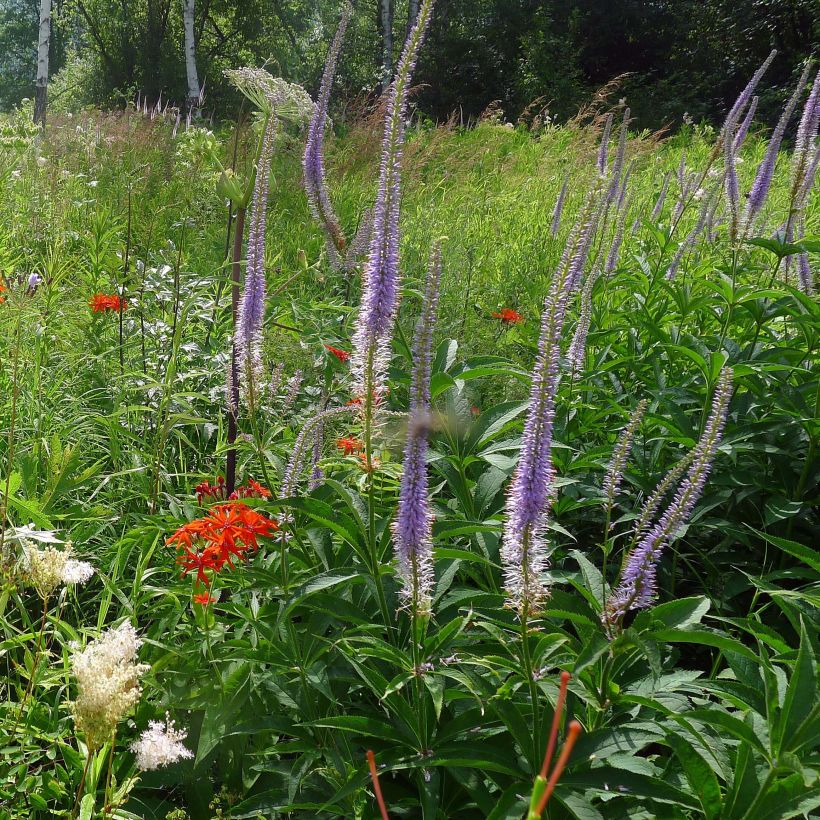

Flowering
Foliage
Plant habit
Botanical data
Veronicastrum
sibiricum
Plantaginaceae
Culver's root, Virginia Speedwell, Bowman's Root
Cultivar or hybrid
Other Veronica - Speedwell
View all →Planting and care
Plant Veronicastrum sibiricum in close to neutral, moist, humus-bearing, deep and fertile soil, in spring or autumn. It prefers dappled sun or partial shade, but can tolerate more sun if its base is always moist. Water regularly in dry and hot summers. Avoid moving once established.
Planting period
Intended location
Care
Planting & care advice
-
, onOrder confirmed
Reply from on Promesse de fleurs
Similar products
Haven't found what you were looking for?
Hardiness is the lowest winter temperature a plant can endure without suffering serious damage or even dying. However, hardiness is affected by location (a sheltered area, such as a patio), protection (winter cover) and soil type (hardiness is improved by well-drained soil).

Photo Sharing Terms & Conditions
In order to encourage gardeners to interact and share their experiences, Promesse de fleurs offers various media enabling content to be uploaded onto its Site - in particular via the ‘Photo sharing’ module.
The User agrees to refrain from:
- Posting any content that is illegal, prejudicial, insulting, racist, inciteful to hatred, revisionist, contrary to public decency, that infringes on privacy or on the privacy rights of third parties, in particular the publicity rights of persons and goods, intellectual property rights, or the right to privacy.
- Submitting content on behalf of a third party;
- Impersonate the identity of a third party and/or publish any personal information about a third party;
In general, the User undertakes to refrain from any unethical behaviour.
All Content (in particular text, comments, files, images, photos, videos, creative works, etc.), which may be subject to property or intellectual property rights, image or other private rights, shall remain the property of the User, subject to the limited rights granted by the terms of the licence granted by Promesse de fleurs as stated below. Users are at liberty to publish or not to publish such Content on the Site, notably via the ‘Photo Sharing’ facility, and accept that this Content shall be made public and freely accessible, notably on the Internet.
Users further acknowledge, undertake to have ,and guarantee that they hold all necessary rights and permissions to publish such material on the Site, in particular with regard to the legislation in force pertaining to any privacy, property, intellectual property, image, or contractual rights, or rights of any other nature. By publishing such Content on the Site, Users acknowledge accepting full liability as publishers of the Content within the meaning of the law, and grant Promesse de fleurs, free of charge, an inclusive, worldwide licence for the said Content for the entire duration of its publication, including all reproduction, representation, up/downloading, displaying, performing, transmission, and storage rights.
Users also grant permission for their name to be linked to the Content and accept that this link may not always be made available.
By engaging in posting material, Users consent to their Content becoming automatically accessible on the Internet, in particular on other sites and/or blogs and/or web pages of the Promesse de fleurs site, including in particular social pages and the Promesse de fleurs catalogue.
Users may secure the removal of entrusted content free of charge by issuing a simple request via our contact form.
The flowering period indicated on our website applies to countries and regions located in USDA zone 8 (France, the United Kingdom, Ireland, the Netherlands, etc.)
It will vary according to where you live:
- In zones 9 to 10 (Italy, Spain, Greece, etc.), flowering will occur about 2 to 4 weeks earlier.
- In zones 6 to 7 (Germany, Poland, Slovenia, and lower mountainous regions), flowering will be delayed by 2 to 3 weeks.
- In zone 5 (Central Europe, Scandinavia), blooming will be delayed by 3 to 5 weeks.
In temperate climates, pruning of spring-flowering shrubs (forsythia, spireas, etc.) should be done just after flowering.
Pruning of summer-flowering shrubs (Indian Lilac, Perovskia, etc.) can be done in winter or spring.
In cold regions as well as with frost-sensitive plants, avoid pruning too early when severe frosts may still occur.
The planting period indicated on our website applies to countries and regions located in USDA zone 8 (France, United Kingdom, Ireland, Netherlands).
It will vary according to where you live:
- In Mediterranean zones (Marseille, Madrid, Milan, etc.), autumn and winter are the best planting periods.
- In continental zones (Strasbourg, Munich, Vienna, etc.), delay planting by 2 to 3 weeks in spring and bring it forward by 2 to 4 weeks in autumn.
- In mountainous regions (the Alps, Pyrenees, Carpathians, etc.), it is best to plant in late spring (May-June) or late summer (August-September).
The harvesting period indicated on our website applies to countries and regions in USDA zone 8 (France, England, Ireland, the Netherlands).
In colder areas (Scandinavia, Poland, Austria...) fruit and vegetable harvests are likely to be delayed by 3-4 weeks.
In warmer areas (Italy, Spain, Greece, etc.), harvesting will probably take place earlier, depending on weather conditions.
The sowing periods indicated on our website apply to countries and regions within USDA Zone 8 (France, UK, Ireland, Netherlands).
In colder areas (Scandinavia, Poland, Austria...), delay any outdoor sowing by 3-4 weeks, or sow under glass.
In warmer climes (Italy, Spain, Greece, etc.), bring outdoor sowing forward by a few weeks.






























